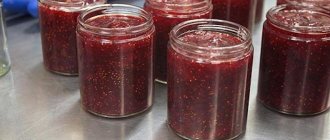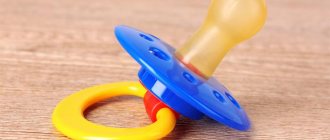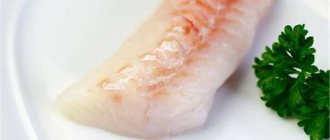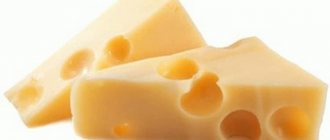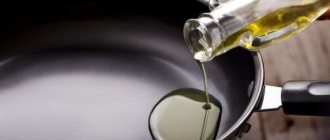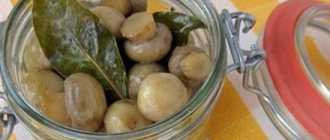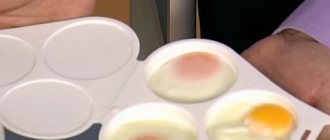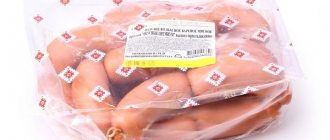Sterilization of baby bottles and nipples in a special sterilizer
You can also sterilize nipples in a special sterilizer.
You can boil pacifiers and plastic bottles in this sterilizer. Sterilizers can sterilize 4-6 bottles at once (usually they are sold as a set) and various accessories for them. Some sterilizers have a place to sterilize the breast pump.
The holes in the nipples must be cleaned with a regular toothpick and a stream of water passed through them.
Rinse the brush or brush used for washing dishes thoroughly in water along with soda, then boil, dry and leave in a sealed container.
The sample nipples you are given at the clinic or doctor's office usually come in sterile packaging for the very first feedings and are expected to be thrown away after one use. Following this, the standard recommendation is that all feeding equipment and pacifiers should be washed and, if possible, sterilized before first use.
- You can easily sterilize all the accessories by placing them in boiling water for about 5 minutes. Special sterilizers are also sold for this purpose.
- Typically, many parents tend to hand wash bottles and nipples in hot, soapy water and rinse immediately after feeding to prevent any food left in the bottle from sticking or drying out on the bottle's sides, curves, and crevices.
- Bottle and nipple brushes are inexpensive and essential for cleaning even hard-to-reach areas.
- You can either re-sterilize bottles and nipples between uses or wash them with very hot water in the dishwasher.
- There are many plastic dishwasher baskets on the market that are specifically designed to serve the sole purpose of holding all those small items used in feeding your baby - pacifiers, lids and other baby accessories that would otherwise get stuck or fall through the dishwasher rack.
There are several ways to sterilize bottles for newborns at home: boil, use kitchen appliances, treat with steam or a special sterilizing solution. Each of the options is good in its own way, so parents will be able to choose exactly the one that is most convenient. Before sterilization, feeding utensils must be freed from any remaining formula or milk and washed thoroughly.
If you are afraid that the bottles may spoil or you don’t want to bother with boiling water, you can purchase a special steam sterilizer that runs on electricity. “Smart” technology makes it easier to handle dishes for a child, since the entire process takes place automatically:
- pour water into the sterilizer;
- put baby bottles, pacifiers, and pacifiers inside;
- set the required mode and turn on the device.
For parents who are on a budget and plan to sterilize bottles, a sterilizer is often ideal. In addition to sterilization, some devices provide the function of heating baby food and steaming. In such devices, sterilization occurs due to steam or UV. rays
The advantages of sterilizers also include a large volume of containers and individual use.
What can be sterilized in a slow cooker?
Sterilization is the removal of any object from bacteria, microorganisms, viruses, etc. In this case, sterilization can be carried out using thermal, chemical, radiation or filtration treatment.
When talking about sterilization at home, we most often mean heat treatment of glass jars and lids for sealing pickles, pickles, jams, etc.
However, this is not the entire list of what can be sterilized in a slow cooker:
- Banks
- Lids
- Baby bottles
- Nipples
- Manicure tools
- Scissors, etc.
Being sure that an item is sterile can be very important, for example, when you work as a hairdresser or do manicures at home. In this case, sterile instruments are a guarantee of safety, both for yourself and for the client. However, most often it is young mothers who resort to sterilization who want to protect their infants with their immature immunity from encounters with bacteria. At the same time, you can sterilize not only jars and pacifiers, but also children's toys, rattles, teethers - everything that a child most often puts in his mouth. At the same time, sterilizing jars in a slow cooker is much easier and safer.
The main condition is that this item must fit into the multicooker bowl. It should be noted that sterilization in a multicooker can be done using steam and water methods.
How to boil dishes
Prepare the bottle for boiling as follows:
- unscrew all removable parts, drain the remaining drinking water or mixture;
- rinse thoroughly with running water;
- use hot water to remove all stains, wash the nipple and bottle cap;
- Use a special brush to wipe all fasteners and the neck of the bottle;
- Rinse thoroughly until completely transparent.
Use a special brush to wipe all the fasteners and the neck of the bottle. There are many detergents for washing children's dishes, which are offered by well-known manufacturers of goods and cosmetics for babies.
When choosing, you should pay attention to the composition of the gel, the presence of dyes and flavors in it: chemical compounds provoke allergies, cause diathesis or discomfort in the digestive system
We suggest you read: Is mole cricket dangerous for humans?
During sterilization, the bottle is heated to a high temperature, which leads to the death of dangerous bacteria. However, boiling can deform the plastic or rubber from which parts of children's dishes are made. Therefore, it is recommended to purchase high-quality products from trusted brands and give preference to glass or high-quality food-grade plastic.
There is a simple and time-tested way to boil a bottle for a newborn baby at home:
Boil a pot of clean water on the stove (the volume depends on the size of the feeding container and the length of the bottle). Completely immerse the cookware, including the connecting parts. Reduce heat to low and leave to simmer in the pan for at least 7-10 minutes. Carefully remove the boiled bottle and leave to cool on a clean towel.
During sterilization, the bottle is heated to a high temperature, which leads to the death of dangerous bacteria.
Many manufacturers of dishes and accessories for feeding newborns offer special devices for sterilizing bottles. They take into account all the disadvantages of home boiling and help save the time and effort of a young mother. Sterilizers use steam treatment under low pressure, which has a number of advantages:
- invisible dirt and leaks are eliminated;
- pathogenic microorganisms are destroyed;
- no need to use pans or monitor the process;
- after switching off, the device keeps the dishes clean until feeding;
- The rubber of the nipples and gaskets does not deteriorate.
Sterilizers use steam treatment under low pressure, which has a number of advantages. The sterilizer holds 2-6 sets, consisting of bottles, nipples and caps, which allows you to boil all used utensils in a day. After starting work, you must close the lid of the autoclave and do not open the valve. It can be turned on in the evening to get clean and dried accessories in the morning.
To boil bottles for a newborn using a microwave oven, you must:
- Wash dishes thoroughly with detergent.
- Pour a little clean water (10–20 ml) into each bottle.
- Without covering the containers with lids, turn on the microwave for 5–7 minutes at full power.
If you have a microwave oven at home, young parents can use a simple and convenient method for processing bottles. If it is necessary to process nipples, you can use a simpler method: immerse all parts and lids in a small food-grade plastic bowl, fill with purified water to the top. Warm up in the microwave for at least 10 minutes at 700–800 W.
Many parents are happy to purchase steamers for preparing dietary food for a nursing mother and using it to prepare high-quality complementary foods for the baby. This kitchen appliance can also be used to treat children's dishes with hot steam. The advantage is safety for rubber parts, large trays. Therefore, at least 2-3 bottles are sterilized at a time.
The steamer can also be used to treat children's dishes with hot steam.
However, there is a big disadvantage of this method - the bottles remain sterile for no more than 3-4 hours. Unlike a sterilizer, steam cools quickly and there is no tightness. Therefore, it is used to simultaneously treat 2-3 bottles and rodents.
Empty container handling
Banks must be carefully inspected: containers with chips, cracks and dirt that cannot be removed are immediately rejected. Then the vessels are washed with warm running water and laundry soap or baking soda. Be sure to use a new sponge.
Water bath
- Fill the pan 2/3 full with water.
- Place a metal sieve or colander on top.
- Place the container on the structure with the neck down.
- After boiling, reduce heat.
- Process 0.5-1 liter jars for 10 minutes, 2-3 liter jars for 15 minutes. (The completion of the process is indicated by drops flowing down the walls of the container).
Instead of a saucepan, you can use a kettle: place the jar on the filler hole instead of the lid, upside down. This method is suitable for large containers. A 0.5-0.7 liter container is placed on the spout of the kettle.
Boiling
- Place a towel on the bottom of a large pan.
- Place jars in a bowl. The containers should not touch, so place pieces of cotton fabric between them.
- Pour water into the pan so that it completely covers the container.
- Place on the stove, bring to a boil, reduce heat so that there is no strong bubbling.
- Process for a quarter of an hour.
In the oven
- Place dishes on a baking sheet or wire rack.
- Place in a cold oven.
- Gradually heat the electric oven to 150°C, the gas oven to 180°C.
- Process containers of 0.5 liters for 10 minutes, 1 liters for a quarter of an hour, 2 liters for 20 minutes, 3 liters for 25-30 minutes.
- Turn off the oven, wait until it cools down to about 80°C, and open the door.
In the microwave
- Pour 10-20 ml of water into a container and place it vertically in the microwave. If the container is three-liter, then pour 50-100 ml of water and place it on its side.
- Select a mode of 700-800 W. Set the timer for two to three minutes for 0.5-2 liter containers and for four to five minutes for three-liter containers.
- After the process is completed, wait one or two minutes, open the door and carefully remove the contents.
If you need dry jars for the preparations, pour water into a glass, filling it 2/3 full, and place it in the microwave along with the containers to be sterilized.
In a steamer
- Pour water into the appropriate reservoir of the device.
- Place the dishes in the food basket with their necks down.
- Turn on the device for a quarter of an hour.
In a convection oven
- Place the container in the bowl of the appliance with the necks up.
- Set the temperature to 120-150°C.
- Set the timer for five to nine minutes for containers up to 1 liter or 10-15 for containers of 2-3 liters.
In a slow cooker
- Pour two or three glasses of water into the bowl of the device.
- Place a basket for steaming food and place one or two containers in it with their necks down.
- Select the “Baking” or “Steaming” mode.
- After the water boils, sterilize the dishes up to 0.5 liters - five minutes, 0.75-1 liters - seven minutes, 2-3 liters - ten minutes.
In the dishwasher
- Load containers into the device.
- Set the maximum temperature mode without adding detergents (should be more than 60°C).
- Turn off the device after the process is completed and remove the container.
In the sun
- Place the jars on a clean towel, necks down, in the sunniest place in the house: on a glazed balcony or on a windowsill.
- Wait four to six hours.
- Pour boiling water over.
Potassium permangantsovka
- Fill the container halfway with a strong solution of potassium permanganate.
- Pour warm water into the container to the top.
- Close the lid and turn it upside down.
- After ten minutes, drain the solution and rinse the jar with boiling water.
The popular sterilant hydrogen peroxide is not used for food containers. This preparation is suitable for processing medical instruments, some household items, and vacuum cans for massage.
Vinegar
- Dilute 70% acetic acid in cold boiled water at the rate of seven tablespoons per 0.5 liter.
- Pour the solution into the jar, close it, shake vigorously for 15-20 seconds, then pour the mixture into the next container.
The prepared vinegar solution is enough to process 50 cans. You can store the composition for a day in the refrigerator in a closed glass container.
Alcohol
- Fill the jar 1/3 full with medical alcohol.
- Close the lid and shake well.
- Turn upside down.
- After one or two minutes, pour off the alcohol.
At the same time, you can sterilize jars and lids in boiling water, a slow cooker or a double boiler. Only glass ones can be placed in the microwave. In the oven and convection oven - both metal and glass, but without rubber gaskets.
In the sterilizer
Grandmother’s methods are, of course, good and effective, but now there are many kitchen appliances that make life easier for young mothers. One of them is a sterilizer. There are quite a few brands that produce these devices, including very well-known and very young manufacturers of household appliances. There is something for every taste and price.
Processing in the sterilizer occurs using steam; only this device is used directly for the child’s items, which ensures greater safety. In addition, other devices can simply be occupied with preparing food for the whole family.
A sterilizer can be purchased at any hardware store or children's world.
Water is poured into the lower compartment of the device, and the dishes must be placed on top. After starting the device, the sterilization procedure starts and lasts for the time programmed in the device. It can even sterilize plastic bottles.
Processing methods
Processing items for feeding includes two stages:
- The washing up.
- Sterilization.
Mothers choose for themselves how to wash baby bottles. The safest way to do this is to use a well-known detergent for washing children's dishes - ordinary soap (laundry or baby soap), grated and diluted with water. It washes away food residues well, helps remove the milky smell and does not cause allergies. How to wash bottles correctly? We pour the soap solution inside and wash it manually with a brush, since it is impossible to wash baby bottles without it.
Synthetic detergents for washing children's dishes also wash well, but they should be selected carefully, carefully reading the composition. Before you buy baby dishwashing detergent that advertises as cleaning well, you should open the bottle and smell what it smells like—sometimes that’s enough to decide whether to put the bottle in your cart or put it back on the shelf.
When choosing what to wash children's dishes with, it is important to ensure that the containers are thoroughly rinsed after washing. The next step is sterilization
There are many ways to sterilize baby bottles at home, both long-known, time-tested and experience of many generations, and modern ones
The next step is sterilization. There are many ways to sterilize baby bottles at home, both long-known, time-tested and experienced by many generations, as well as modern ones.
They are processed:
- in boiling water,
- in a sterilizer,
- in the microwave,
- in a slow cooker,
- in a steamer.
If previously the only way to radically clean both adult and children's dishes was boiling in an ordinary large saucepan, now many people prefer to use multicookers, double boilers and microwave ovens (ultra-high frequency) for this purpose. And using a detergent for washing children's dishes such as soluble disinfectant tablets (Milton, Bebe Confort), you can carry out cold disinfection. With its help, it is possible to sterilize plastic bottles, since it is impossible to boil them - high temperatures are excluded when processing plastic. After using the tablets, be sure to boil the water and rinse the containers.
Methods for sterilizing baby bottles
The baby bottle is placed in a very ordinary clean colander, which is placed over a saucepan of boiling water and kept over steam for at least 10 minutes.
Sterilization in boiling water
To boil baby bottles, you will need a separate saucepan with a lid that is not used for other purposes. The pan is filled with water, preferably filtered, to avoid the formation of limescale, and brought to a boil over heat. Bottles (several pieces at once) are immersed in boiling water so that the water covers them completely, and boil for 10 minutes. First find out what material the bottles are made of and whether they can be boiled.
If utensils have to be sterilized frequently, it is better to use more modern methods.
Sterilization in a slow cooker or double boiler
Sterilizing baby bottles with these kitchen aids is very convenient and easy. The effect is achieved by treating the dishes with hot steam.
To sterilize in a multicooker, pour about a liter of filtered water into the bowl, place a steam cooking rack on top, on which bottles are placed upside down, and cover with a lid. Bottles can be placed on their sides if they do not fit in a standing position. Then set the “Steam” mode for 15 minutes.
Some manufacturers have begun to make special water modes for bottles in multicookers, which makes sterilization even easier.
The multicooker has a sealed design, and if you do not open the lid, the bottles will remain sterile for a long time.
Inconvenience may arise if the volume of the model is small, which will not fit several bottles at once, which is why it will not be possible to create a stock of sterilized utensils.
Sterilization occurs in a double boiler in the same way. If the bottles are tall, you can remove an additional section in it, increasing the space in height. The bottles can be left in the steamer until they cool down.
Plastic bottles may melt under the influence of hot steam.
Microwave sterilization
All feeding equipment, even plastic bottles, can be sterilized in the microwave. The bottles are placed in a special container for use in the microwave, filled with cold water and closed tightly with a lid. Place the container in the microwave and sterilize the bottles for 8 minutes at full power.
Now many manufacturers produce bottles specifically for sterilization in a microwave oven without any equipment. In this case, the effect is achieved in a couple of minutes, and the bottles themselves do not deform or lose their qualities.
Sterilization in the oven
Place the bottles on a baking sheet with the neck down, preheat the oven to 180C and sterilize for 20 minutes. You can pour 50 ml of hot water into the bottles and place them in the oven for 20-30 minutes at a temperature of 180-200C.
Sterilizing jars in a slow cooker
Fans of winter preparations will appreciate the multicooker's capabilities in sterilizing jars. After all, for this you do not need to use any additional lids or attachments on the pan, the gas stove remains free, and the air in the room does not heat up, as happens during sterilization in the usual way.
First of all, glass jars should be prepared - thoroughly washed and rinsed under running water. Then you need to pour 1 liter of water into the multicooker bowl and install the steamer container. Washed jars are placed on a stand with their necks down. The number of cans that can fit on the stand depends on their size and volume: standard half-liter cans will fit 3 pieces, but three-liter cans will fit only one. Lids for jars can also be placed directly next to the jars, and if there is not enough space for them, they can be placed directly in the water under the container stand. After that. Once all the banks are installed, the “steam” mode starts. To sterilize half-liter jars, 10 minutes will be enough, and for large 3-liter jars it will take 15-20 minutes.
After sterilization, the jars should be carefully removed using oven mitts or a towel and allowed to dry, covered with a clean towel. In this state, the jars can last up to 2 days, and during this time you can safely prepare salads and jams in a slow cooker.
Opinions of Western and Russian doctors
Not all pediatricians in the world are convinced of the need to sterilize bottles for newborns. Many doctors believe that it is the complete sterility of children's dishes that contributes to the appearance and development of all kinds of allergic reactions in a child.
Therefore, the overwhelming majority of Western pediatricians and some Russian ones, including Evgeny Komarovsky, insist on refusing to sterilize children's dishes. In their opinion, it is necessary to sterilize only bottles in which breast milk or diluted artificial formula will be stored for an extended period of time.
Ultimately, parents must decide whether to sterilize their child's utensils. But you should remember - you need to look for a middle ground in everything. Excessive care simply will not allow the newborn’s immune system to develop normally, and a complete lack of sterilization of his utensils can undermine his already fragile health.
Komarovsky supports the opinion of scientists that sterilization of children's dishes is one of the factors provoking allergic reactions. The famous doctor is sure that sterility is important only when in contact with blood and for people with immune problems, and for dishes from which small children are fed, only cleanliness is needed.
Organizational issues regarding the disinfection of children's dishes and accessories do not always resonate with pediatricians and children's specialists. Many of them do not support the opinion that the living conditions of an infant should meet the term “sterile”. European pediatricians also share this point of view.
Among the well-known Russian specialists with this point of view regarding the disinfection of bottles, Dr. Komarovsky is known, who, like European specialists, does not support the idea of total sterility.
This is not a reason for the complete lack of hygienic conditions for the child, since ordinary cleanliness, not carried to fanaticism, is already a guarantee of the health of children and adults. However, it is necessary to sterilize containers that have already contained formula or breast milk.
If the mother has the desire and persistence, breastfeeding can be established in any case. By following the basic rules of breast pumping, the amount of milk will increase and be supplied to the baby in the right volume.
When this happens, the child himself will let you know about it by drinking mother’s milk evenly, but it is worth remembering that if there is an excess of milk, the child will choke when feeding, and you need to hold it slightly higher than before.
The process of hygienic processing of children's utensils by sterilization is important for a newborn, especially in the first few months. The mother must fully evaluate the pros and cons of sterilization, the benefits for the baby and the convenience for herself.
What other methods of sterilization are there?
The following options are also used for sterilization:
- cold method;
- multicooker;
- microwave;
- special sterilizer;
- double boiler.
Let's take a closer look at each of them.
Cold way
Disinfecting tablets (for example, Milton) are used here; you can buy them at any pharmacy. The tablet is dissolved in cold water, in which the dishes are then kept for about 25 minutes, then thoroughly washed with boiling water. The advantage of this method is that bottles and nipples are not damaged, as with heat treatment. The downside is that the smell of chlorine may remain.
Multicooker
Another simple way to boil feeding bottles. Nowadays there is a multicooker in almost every home, and with the help of this device you can not only cook various dishes, but also use it as a sterilizer. Each multicooker has a strainer. Set up a sieve and place all the items on it upside down, and pour water into the bowl. Set the “Steam” mode and processing time. The water will boil and the bottles and teats will be steamed.
Microwave
This option is the simplest and there is no need to keep track of time. Take a deep glass cup (for example, tempered glass), immerse the dishes that need to be disinfected into it, and fill it with water. Then set the power to maximum and set the time on the timer. Depending on the type of microwave oven, it will take from 7 to 10 minutes. At the end of the procedure, remove the items with tongs, dry them on a clean towel and put them in a clean container. The only disadvantage of the microwave is the inability to process metal components, and the nipple wears out very quickly.
Sterilizer
This device was created specifically for handling dishes for children and is very convenient. You pour water and place nipples, bottles and pacifiers in special compartments. How long to boil baby bottles in this way depends on the type of sterilizer, usually no more than 15 minutes. The main advantage of this option is that the dishes will be sterile for several hours.
Double boiler
Pour a little water into the bottom of the device and place the bottles upside down. Place the remaining items in the upper compartment and set the “Cooking” mode. Boiling time 7-15 minutes.
And the last method for boiling a baby’s bottle is similar to the action of a double boiler. Place a saucepan on gas, pour water into it, and place a colander on top. Place the bottle upside down in a colander. Boil the water for about 10 minutes. The result is the same as after regular boiling, but the difference is that this method is more gentle, in fact, like all steam methods.
Sterilization of containers with workpieces
Jars with blanks are sterilized or pasteurized immediately before twisting. The sequence of actions is the same as when processing empty containers, only now they are covered (but not closed) with lids. Therefore, they cannot be laid on their sides or turned upside down. The application of each method has its own specifics.
- Boiling or water bath. You must place a towel or a special wooden grate on the bottom of the pan. Measure the processing time from the moment the water boils.
- Oven . Heat to 100°C for pasteurization or 140-180°C for sterilization.
- Microwave . The dishes are placed in the device without lids. Record the time when the marinade or syrup boils.
- Multicooker. Pasteurization is carried out in the same way as when using a water bath. Instead of a pan there is a bowl of the device. To heat the water, select the “Baking” mode.
- Air fryer. The containers are covered with lids without rubber gaskets, and the temperature is set to 150°C or higher. The time is measured from the moment bubbles appear on the surface of the workpiece.
The processing time for containers with blanks depends on its volume and the method used. The recommended parameters are shown in the table.
Table - Processing time for containers with blanks (in minutes)
When using an air fryer, the processing time should be reduced by 30% from that recommended in the standard recipe.
The best ways to sterilize baby food containers
In the past, the most common way to remove germs from baby bottles was by boiling them. Currently, with the development of technology, other methods of carrying out the procedure have been invented. In some cases, this can be done even in cold water.
Boiling
Boiling as a way to destroy bacteria from children's dishes still remains very popular
But how to boil baby bottles and pacifiers while taking precautions? To do this, you will need a deep saucepan, the height of which can ensure that the bottle is completely covered with water. After filling the container with it, the pan must be put on the fire and brought to a boil. Next, the bottles must be boiled for ten to fifteen minutes, and after that the water must be drained
They can be stored in a saucepan covered with a lid for some time before use.
Next, the bottles must be boiled for ten to fifteen minutes, and after that the water must be drained. They can be stored in a saucepan covered with a lid for some time before use.
Video: boiling a bottle:
Important:
Using a sterilizer
To ensure the cleanliness and sterility of dishes for babies, modern manufacturers produce special sterilizers, thanks to which parents do not wonder how to properly sterilize bottles for newborns. The device is a small box with compartments for containers and a lid plus a heating element. To use it, you need to pour water into the compartment and fill the cells with bottles. Many units are also equipped with convenient timers, and thanks to their design, the dishes inside can remain sterile for a long time.
It is best to purchase equipment for procedures and utensils from the same manufacturer. Then use will be as comfortable and convenient as possible, and the result will be the best.
In a steamer
How to boil baby bottles and pacifiers using a steamer? This question arose naturally in connection with the appearance of this gadget in people’s kitchens. According to the instructions, you need to pour water into the lower compartment to the specified level, and put baby dishes in one of the upper compartments. To make it sterile, just turn on the timer for five to ten minutes.
Video: how to sterilize with steam?
Important:
Using a multicooker
How to sterilize baby bottles using modern kitchen devices? Carrying out the procedure in a multicooker is as convenient and simple as using a double boiler. As a rule, here it is necessary to use the “steam” mode, pouring one liter of water into the bottom of the device and placing the accessories on the appropriate grill.
Using pills
Antiseptic tablets for children's dishes are a relatively new invention and extremely convenient to use, especially if it is possible to carry out the procedure only in cold water. They can be purchased at pharmacies and specialty stores.
It is important that the preparations are odorless and do not leave traces. For the same purpose, the proportions of the product and water should be observed correctly.
Water is poured into a suitable container (can be at any convenient temperature) so that it completely covers the container. The operation time usually takes about forty minutes, thirty of which the nipples, bottles and accessories are in solution.
Microwave
The operation must be carried out using special bags or containers intended for use in the microwave (usually the manufacturer makes notes on the product packaging about the possibilities of use in the microwave), distributing bottles there and filling them with water. The residence time in the oven will be about seven to eight minutes.
Important:
Why is it better to sterilize jars in a slow cooker than in the oven?
The usual method of sterilizing jars in the oven is inferior in efficiency to a multicooker. The difference is obvious:
- at a time in the oven you can process up to 10 cans of 0.5 l each or up to 4 cans of up to 3 l, which cannot be done in a slow cooker;
- the oven takes too long to preheat, but the electrical appliance turns on immediately;
- in a slow cooker you can heat up jars very simply and quickly, the quality of the process is significantly higher;
- The device is very easy to operate, there is built-in protection against network outages.
In general, sterilizing jars in a slow cooker is easier, so this option is preferable to the oven. The model is not important, the main thing is to choose the appropriate mode. Mastering this technology is quite easy for everyone. If the family has a summer house or a vegetable garden, and annual harvests of vegetables and fruits, it definitely makes sense to purchase a multi-cooker for preparing food in the fall - there will be a supply of vitamin products.
Preparing for sterilization
After feeding the baby, children's dishes are washed immediately - this cannot be put off due to fatigue or lack of time. Formula bottles after use:
- Unscrew, separate the lid and nipple, they are also separated;
- Empty of uneaten formula, milk or porridge;
- Rinse the glass for the first time with cold water - this way the glass is better cleaned of milk residues and becomes transparent;
- Wash with hot water using baby dishwashing liquid, special soap or baking soda;
- Contaminants at the bottom are washed with a brush;
- Residues of food on the thread for the nipple are washed with a special brush;
- The nipples are washed using the same products and a brush for washing baby dishes;
- Rinse the baby dishes first with warm, then with cold running water, turn them over onto a clean towel or folded gauze and allow the water to drain.
Reason for processing dishes for babies
Let's figure out why to sterilize bottles, is it necessary to disinfect them so thoroughly? Perhaps it will be enough to rinse them and that’s it?
It has long been known that milk, when stored for a long time, becomes a source of pathogenic microorganisms that multiply and can cause severe poisoning. Imagine what will happen if the milk is not completely washed out. A harmful environment will develop inside.
Such microorganisms are destroyed only by high temperatures. Therefore, it would be more correct to immediately rinse and disinfect the dishes well after use.
The question immediately arises: how long should it be treated this way? A month, six months or more?
Immunologists say that by about a year and a half, a child becomes completely accustomed to an environment that does not always contain beneficial microorganisms. Therefore, it is necessary to sterilize before 12 months. And when complementary feeding begins, wash the spoons well and pour boiling water over them before use.
I think there is no need to talk about the fact that this cutlery should be individual for the baby.
How to sterilize baby bottles in a slow cooker: step by step...
22 Nov
2015 - You don't have to buy a baby bottle sterilizer. ... How to sterilize bottles in a multicooker: step-by-step instructions ... I have a Redmond, I constantly sterilize my nipples and bottles in it ... Girls, hello! I read the tag about storing milk, but didn’t find my question. Google didn't help either, so your only hope is. For the life of me I don’t understand how to sterilize a breast pump + bottle nipple + bottle in a multicooker, pour water, put everything in there and cook?
I read the tag about storing milk, but didn’t find my question. Google didn't help either, so your only hope is. For the life of me I don’t understand how to sterilize a breast pump + bottle nipple + bottle in a multicooker, pour water, put everything in there and cook? How long to cook - like buckwheat porridge? The first time I used a breast pump spontaneously - the baby slept for 8 hours, and my breasts almost cracked.
How long to cook - like buckwheat porridge? The first time I used a breast pump spontaneously - the baby slept for 8 hours, and my breasts almost cracked. Then I boiled it in water for 5 minutes, everything was covered with a white coating, then I washed it with soap, expressed it anyway, but I was afraid to give it to the child - I thought the plastic had crumbled or something... In a multicooker, will it be the “steam” mode? Do I need to pour water? If so, it’s not steam, but cooking :/ The steam net is small; if you put the disassembled breast pump in, the lid won’t close. Well, then you will need 2 visits of 40 minutes each, as I understand it. In short, girls who sterilize in a slow cooker, explain to the fool step by step, please. Second question. Do you think this procedure is possible: used a breast pump, sterilized the breast pump, left it. The next time it was needed, they doused it well with boiling water and used it again. Those. sterilization long before use, and there it is already preventatively clean. You don’t always have an hour to pump, because... I try not to overuse it, and pumping on demand is a “must do.” Third. Manual breast pump Avent. The consultant recommended expressing 10 ml from one breast, 10 ml from the other, and so on up to 100 ml (daughter is 3 months old). I immediately got sick of it, and even woke up in a puddle of milk that day. Because I feed from one breast at one feeding, then wouldn’t it be more logical to pump one breast as if it were a feeding?.. And the last thing. So I pumped and immediately took the milk with me (in a thing like a thermos for a bottle). The baby overslept and the milk was of no use. Let’s say I had 4 hours with me. Can it still be frozen? Or just feed it once it’s eaten, or throw it away? Many thanks to everyone who read. I really want to do everything right and I’m terribly worried about my lactation (I wasn’t fed at all), that’s why I have so many questions. Tags: pumping, storing breast milk Posted on May. 4th, 2015 at 10:11 am | Link | Leave a comment | 15 comments | Share
Then I boiled it in water for 5 minutes, everything was covered with a white coating, then I washed it with soap, expressed it anyway, but I was afraid to give it to the child - I thought the plastic had crumbled or something... In a multicooker, will it be the “steam” mode? Do I need to pour water? If so, it’s not steam, but cooking :/ The steam net is small; if you put the disassembled breast pump in, the lid won’t close. Well, then you will need 2 visits of 40 minutes each, as I understand it. In short, girls who sterilize in a slow cooker, explain to the fool step by step, please. Second question. Do you think this procedure is possible: used a breast pump, sterilized the breast pump, left it. The next time it was needed, they doused it well with boiling water and used it again. Those. sterilization long before use, and there it is already preventatively clean. You don’t always have an hour to pump, because... I try not to overuse it, and pumping on demand is a “must do.” Third. Manual breast pump Avent. The consultant recommended expressing 10 ml from one breast, 10 ml from the other, and so on up to 100 ml (daughter is 3 months old). I immediately got sick of it, and even woke up in a puddle of milk that day. Because I feed from one breast at one feeding, then wouldn’t it be more logical to pump one breast as if it were a feeding?.. And the last thing. So I pumped and immediately took the milk with me (in a thing like a thermos for a bottle). The baby overslept and the milk was of no use. Let’s say I had 4 hours with me. Can it still be frozen? Or just feed it once it’s eaten, or throw it away? Many thanks to everyone who read. I really want to do everything right and I’m terribly worried about my lactation (I wasn’t fed at all), that’s why I have so many questions. Tags: pumping, storing breast milk Posted on May. 4th, 2015 at 10:11 am | Link | Leave a comment | 15 comments | Share
Processing and storage
The only danger that can await children and parents using them is the possibility of contracting an infection due to improper handling. Constantly treating your nipples will help you easily avoid this problem. Before electric appliances, parents simply boiled them. Now there are enough ways to sterilize nipples for newborn babies.
In order to always have a clean one at hand, you need to have 3-4 pieces in stock. To store sterile items, you can prepare a regular glass jar with a lid. How often sterilization will need to be done depends on how many pacifiers are available and how often the child uses them.
Every housewife knows how to wash dishes. But you should not use regular detergents for children's dishes. The composition of such liquids can be dangerous for the baby. Some ingredients can cause allergic reactions that are extremely undesirable for a child.
Old proven products are absolutely safe to use: laundry soap, soda and mustard powder. These products are hypoallergenic and help achieve results.
However, we must remember that soda can destroy latex. Therefore, using it to wash nipples is undesirable.
Rules to follow when processing baby dishes and pacifiers:
- Rinse all parts of the pacifier thoroughly.
- If a white coating appears inside the latex balloon, then the pacifier is unsuitable for use.
- Bitten and cracked accessories should not be given to the baby.
- Wash milk bottles until shiny. After washing, wipe with table salt and rinse with clean water.
- Be sure to sterilize all utensils and nipples.
- Do not use chemicals to wash dishes and pacifiers.
An effective and convenient method for processing bottles is the use of electric or steam sterilizers. These devices are compact and reliable; by purchasing products from well-known brands, you can be sure that after the procedure, optimal hygiene of the dishes will be ensured.
Some slow cookers also allow you to sterilize baby bottles. A number of kitchen devices even have several modes for processing dishes - especially for nipples with steam, and bottles are processed using the “water” program.
You can sterilize feeding bottles using antiseptic tablets - you only need cold water to dissolve them. The product must be diluted strictly according to the instructions; the liquid can be stored for a day. After processing the dishes, they must be washed in boiled water. The good thing about this method is that you can use the tablets on vacation, on a hike, or on a trip.
After you have fed your baby, you must wash all dishes and other utensils in warm soapy water. Moreover, after formula milk or other dairy products (kefir, porridge), bottles and nipples should first be rinsed well with cold water (otherwise the milk will curdle and cover the walls of the bottle with a thick film).
Be sure to rinse your nipples with clean running water as well. It's easy to clean them with a bottle brush (you'll need a small bottle brush, which should only be used for baby bottles). If you suddenly don’t have a brush, you can clean milk bottles using “grandmother’s” method. Place a teaspoon of uncooked rice or other grain (egg shells will also work) in the bottle and fill the bottle halfway with water. Then close the neck of the bottle with your hand and shake the bottle several times.
If you give a bottle of pureed food with vegetable oil or a rich soup, it will also be difficult for you to clean the bottle. Try rinsing the bottle with coffee grounds or baking soda.
How to properly sterilize jars in the microwave - empty and with blanks
How to sterilize jars
Sterilization of jars is considered the most important stage of canning, since this ensures the possibility of long-term storage of the “gifts” of nature. Today, every housewife has a whole arsenal of kitchen “helpers” that can simplify this process as much as possible. So, you can easily sterilize jars in the microwave - both empty and with blanks. In this case, you get rid of the “fuss” with pots filled with boiling water, and also save time on canning. Everything ingenious is simple!
To sterilize jars in the microwave, you need to stock up on:
- glass jars for preservation
- potholder or oven mitts
The procedure for sterilizing jars in the microwave:
- Wash the container thoroughly, clearing it of dirt, paying special attention to the neck - the place of contact with the lid. We check for cracks and chips.
- We choose lids for preservation that are clean, smooth, free of rust, with a tight and new rubber band. For jars with screw necks, we select screw caps, which must also be in good condition. Before you start canning, make sure the size of the lid and jar match - just screw it on. The lid should fit tightly to the neck and not slip when screwed on.
- After washing, pour 1–2 cm of water into each container and place in the microwave. We set the power to 750 W and wait for the water to boil - about 3 - 4 minutes. Now you need to wait another 2 minutes and carefully remove the jars. As you can see, the procedure for sterilizing jars in the microwave is extremely simple and fast.
- If you need to sterilize jars with blanks, then place them in such a way as not to interfere with the operation of the rotating element of the microwave oven. Set the power to 750 - 800 W and wait about 5 minutes - the contents inside should boil.
- Then sterilize for 1 - 2 minutes, carefully remove and roll up.
Important: canning lids should never be placed in the microwave! This may lead to damage to the electrical appliance.
This method of sterilizing jars is simple, fast and convenient. In addition, during this process, your kitchen is guaranteed not to turn into a “steam room”, since you will not need pots and boiling water for sterilization.
